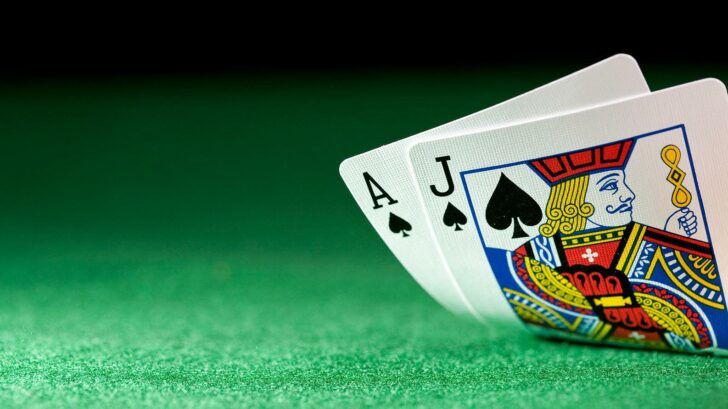The Gambler’s Fallacy Explained

The gambler’s fallacy relies on the flawed belief that each event is connected, and therefore dependent, on its predecessors. Falling prey to the fallacy can result in huge losses.
The concept of the “gambler’s fallacy” is one of the great pitfalls which can beset a beginning gambler. The fallacy relies on the law of averages which many consider intuitive but in fact is flawed and can be very destructive. It applies to many walks of life, from the basketball player who keeps shooting in the belief that his next shot will be successful to the king who keeps procreating in the expectation that his next child will be a male heir. This article will explain what the fallacy is, playing special attention to how it applies to casino strategy games.
The Fallacy
The basic principle behind it is that of equilibrium. When there are two possible outcomes they tend to equalize over time: “If a fair coin is tossed repeatedly and tails comes up many times in a row, a gambler may believe, incorrectly, that heads is more likely on the following toss. This is an informal fallacy.”
To many, it makes sense that landing a heads would increase the likelihood of the next toss being a tails. The fallacy is that this line of thinking assumes that the coin has a memory, that each toss happens in relation to previous tosses. The truth is that a coin has no memory. Each toss occurs in a vacuum. The chances of landing a heads 21 times consecutively is 1 in 2,097,152. However, if you’ve already landed 20 heads in a row, the chance of landing the same on the 21st toss is 50 percent. So the chance of landing 21 heads in a row is not much different from landing 20 in a row.
The Die example
A mathematical example useful for explaining the gambler’s fallacy is that of rolling a 16-sided die. A win is defined by rolling a 1, and the player is given 16 chances to do so. According to the following equation, the chances of doing this successfully in 16 chances are:
1 – [15 / 16]16 = 64.39%
Let’s assume that the player fails to land a 1 on the first roll. According to the gambler’s fallacy, their chances of winning would thereby increase going forward. But according to the laws of mathematics, the opposite is true. They now have 15 chances instead of 16, and the equation reads:
1 – [15 / 16]15 = 62.02%
Because the die has no memory the chance of landing a 1 on any roll is 1 in 16. The more chances the player has, the higher their chance of winning. So losing initially means fewer remaining chances, and a lower overall chance of winning. Mathematical reasoning is contrary to the logic behind the gambler’s fallacy, proving that the logic itself is flawed.
The Monte Carlo incident
The most famous historical example of gambler’s fallacy occurred in a game of roulette at the Casino de Monte Carlo in 1913. On that evening an unprecedented event occurred: the ball landed on black 26 times in a row. Ascribing to the logic of the fallacy, some players in attendance began placing increasingly high bets on red as the streak progressed, believing that the trend must reverse itself. Gamblers lost millions of French francs betting in this way, failing to realize that the occurrence was completely random and that each spin was independent of the others.
In Blackjack
Some blackjack players employ the fallacy in the following way: after a series of losing hands they increase their bet on the expectation that they will go on an equilibrium-restoring winning streak. They also follow the inverse: a winning streak is followed by a reduction in the wager, on the anticipation of future losses. A card counter can reasonably anticipate whether upcoming cards will be low or high judging by which cards were dealt previously. But this is not the same thing as anticipating whether they will win or lose.
In the long run, players win 47.5 percent of hands with the house winning the remaining 52.5 percent. This is how the house retains its edge. Many players mistakenly use this figure as a benchmark, thinking that they will win 48 out of every 100 hands. So, roughly speaking, if a player has won 46 out of 98 hands they expect their next two to be winners so increase their bets.
The 47.5/52.5 ratio coalesces over thousands of hands so cannot be anticipated by the player. In addition, if their blackjack skills are faulty they will have a low chance of winning regardless. Unless the player is using a card counting system, there is no way to anticipate future occurrences. Even then, counting cannot predict wins or losses.
The cause
The cause for this mysterious institution has been explored by everyone from mathematicians to psychologists to theologians. It centers around the idea that each event is connected to previous events, that absolute originality doesn’t exist. As shown by mathematical analysis, in gambling events occur completely randomly. The commonness of the gambler’s fallacy appears to stem from the basic human instinct that there is order in the universe; that events are predictable. Regardless of the cause, when gambling always keep in mind that each new hand or toss of the die represents a blank slate.




